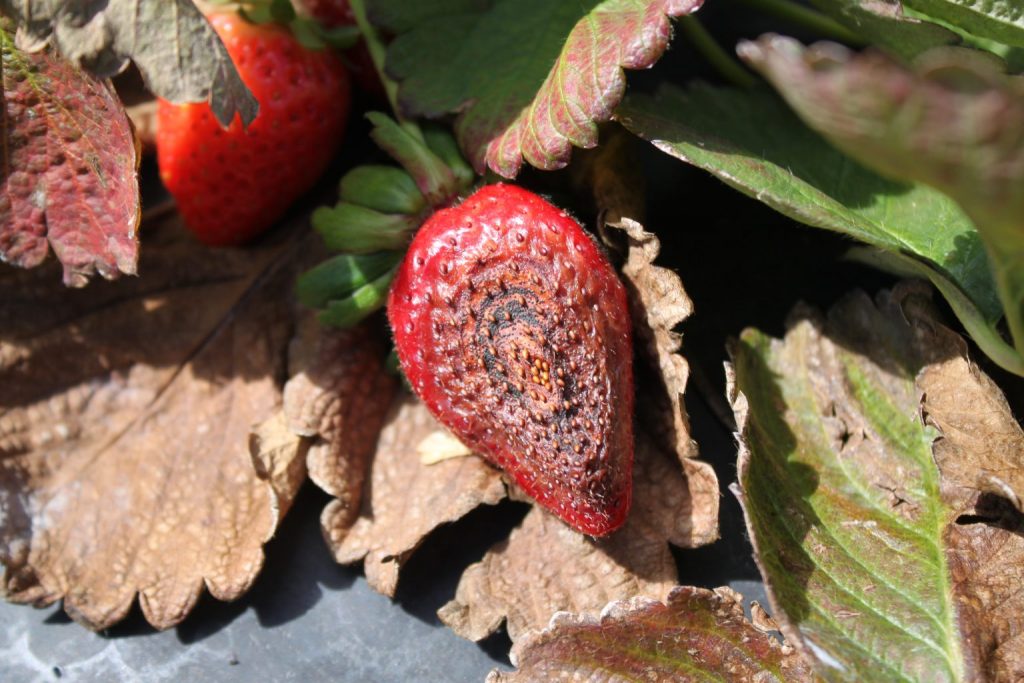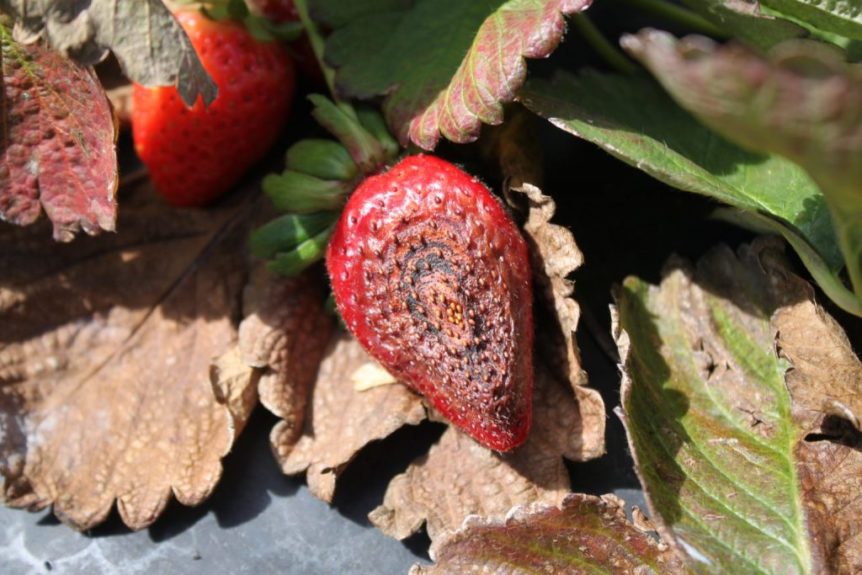
By Clint Thompson
Disease development is normally synonymous with wet weather. It is no different with Georgia’s strawberry crop, which is under assault from multiple diseases.
Phil Brannen, University of Georgia Cooperative Extension fruit disease specialist, highlighted some of those diseases that Georgia growers are already observing.
“The thing that we’re seeing already is this neopestalotiopsis. We’re just trying to address it by adjusting spray programs. We have quite a few sites this year where we have confirmed it as being present. It’s out there,” Brannen said. “So far, we have not seen anthracnose. That will be a disease, if it warms up, if it gets hot and we have this rainfall, the combination of those two could be really bad. We’re starting to see some botrytis on the fruit and on the leaves. Botrytis is out there.
“The one that we’re seeing a lot of this year is phytophthora, the root rot. We’re losing plants to phytophthora. Again, when you have these wet conditions like this, if we have the phytophthora on the root, then you can see that you’re going to have problems. It can be a real issue for us. We’re already seeing a lot of that.
“We’ve had a lot of issues this year already with strawberry diseases, and we’re not even into full strawberry season by any stretch.”
Challenge to Spray
Making matters worse is the unlikelihood that growers can access their fields. Saturated conditions have been prevalent across the region, so some producers might not be to apply fungicides as efficiently as they are used to. Brannen said some fungicides can be injected through the drip tape for strawberries, but overhead sprays are still required in some instances.
“Some of the things they do need to spray over the top, so it can be a problem,” he noted.










